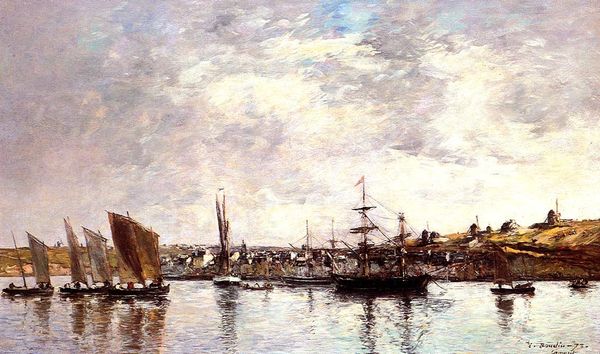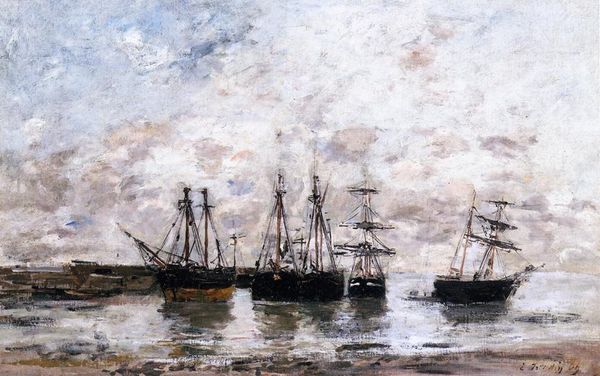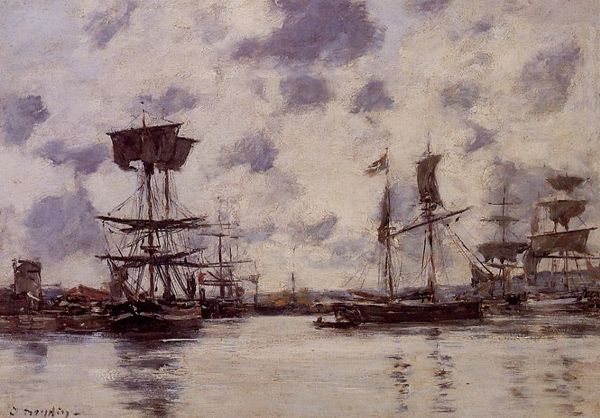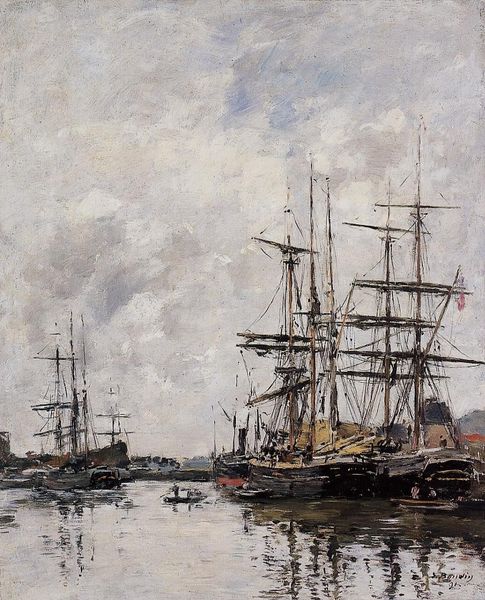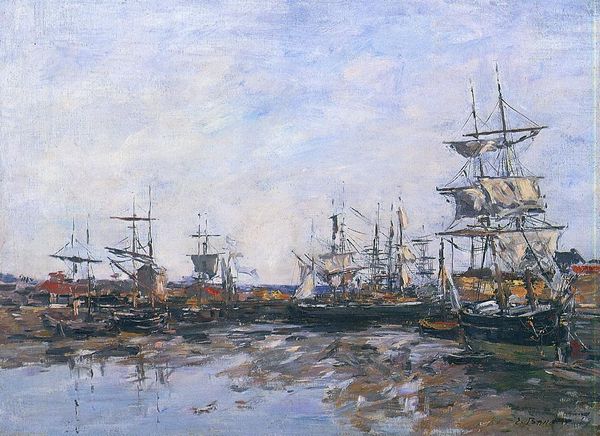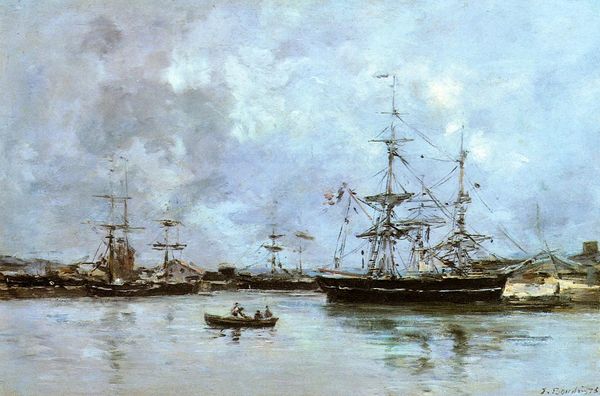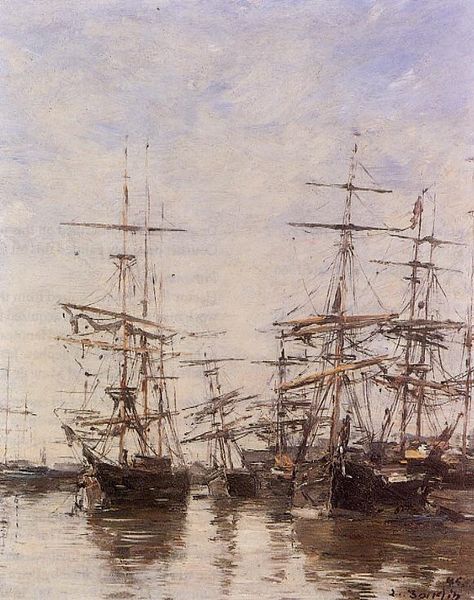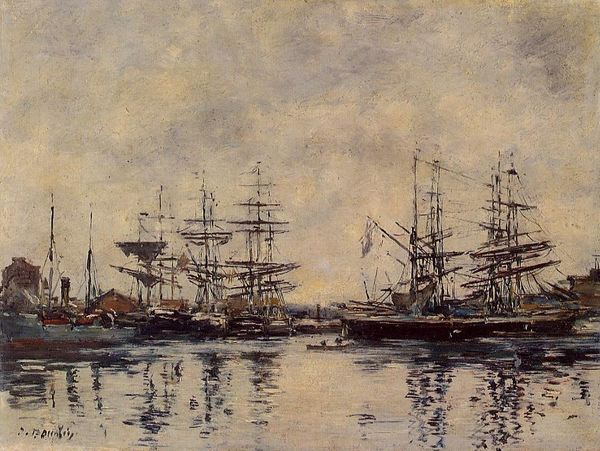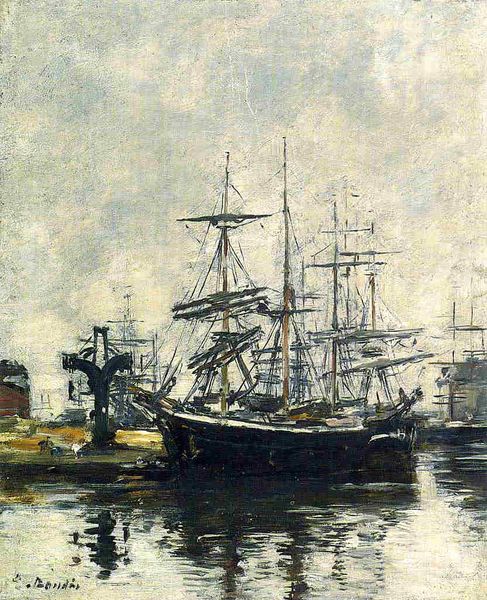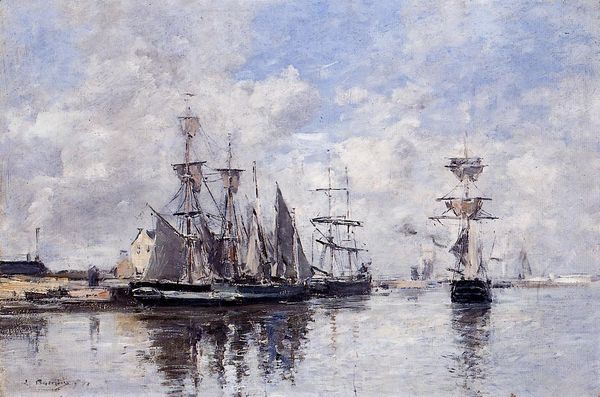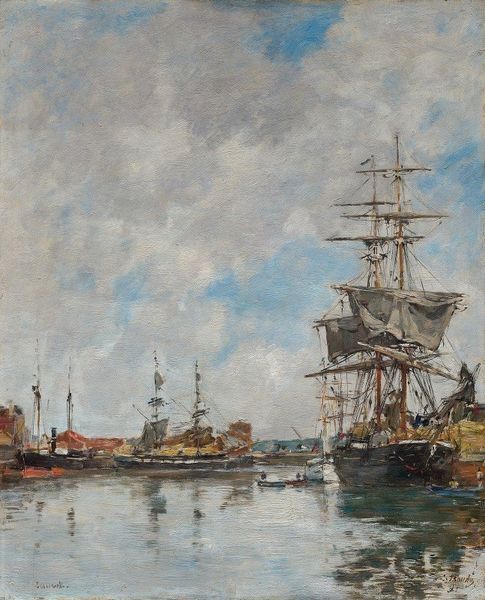
#
impressionist
#
boat
#
abstract expressionism
#
abstract painting
#
ship
#
impressionist painting style
#
vehicle
#
impressionist landscape
#
possibly oil pastel
#
oil painting
#
fluid art
#
acrylic on canvas
#
water
#
expressionist
Copyright: Public domain
Curator: Let’s turn our attention to this vista by Eugène Boudin, "Antwerp, the Port." Take a moment. What’s your first impression? Editor: A subdued tranquility. Despite the ships and industry, the overall feeling is rather quiet, almost melancholy. The color palette is quite muted. Curator: Yes, Boudin certainly evokes a mood here. When we look closer at the material elements, it's fascinating to consider how Boudin approached depicting the bustling port of Antwerp. Note the handling of light on the water, how the artist makes the viewer consider the materiality of a harbor town in flux, the economic powerhouse represented by ships loading and unloading. Editor: Absolutely, and I'm struck by the almost photographic quality in the rendering of the industrial components and merchant presence. Antwerp was a pivotal trade center; how does Boudin navigate this nexus of commerce and perhaps, the social issues tied to global trade in his representation? Curator: Good point. Think about Boudin's technique. We know he was committed to painting en plein air, directly from life, giving these industrial processes of material shipping a fresh representation. Considering that the tradition until the mid-19th century favored idealized studio compositions, the real, lived experiences of dockworkers were starting to find a new kind of artistic record. Editor: The way Boudin captures the light and atmosphere also resonates with the changing social landscape of his time, echoing the shifting power dynamics. Are we meant to reflect on the people that lived on the edges of this port industry, the underpaid, undervalued laborers dependent upon the daily shipment of foreign-acquired wares and services? Curator: Those issues remained unseen, unfortunately. Boudin chooses to show how modernity was rapidly transforming the natural and economic landscapes of Europe; that harbors were crucial transit points within empires; those social dynamics and the undercurrent of those in transit, seeking opportunities within imperial networks remain, subtly acknowledged in Boudin's work. Editor: Perhaps we are asking the viewer to become aware of those undercurrents of the modern industrialized port? Food for thought, especially from this historical vantage point. I appreciate the complexities that are quietly delivered. Curator: Indeed. I agree. Boudin offers us a compelling record of the intersection of labor and artistry and material documentation, allowing us a glimpse into how these port cities are shaped.
Comments
No comments
Be the first to comment and join the conversation on the ultimate creative platform.
